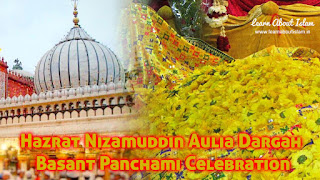Ghusl after intercourse in Islam - Cleanliness in Islam
Question: After doing intercourse, Can we just clean ourselves and take bath or is Ghusl necessary?
Answer:
Islam is a religion of cleanliness and purity and also ask every Muslim to be clean always. The person after having intercourse is in a state of impurity and can must clean and purifies himself or herself by taking Ghusl
Quran says "O you who believe … If you are in a state of major impurity, cleanse yourselves well (by taking a bath), … or you have had sexual contact with women …" (Qur'an 5:6)
In Ghusl (Islamic Bath) there are three mandatory actions of Ghusl:
1. To rinse the mouth
2. To rinse the nose
3. To wash the entire body
It is important to note that:
• All areas of the body are thoroughly washed with water. The inner part of the circumcised area must also be washed provided it can be opened without any difficulty.
• The inner part of the navel is washed.
• The inside of a cavity which has not sealed is washed.
• Water must reach the skin underneath the beard, moustache and eyebrows.
• To ensure that water reaches the external part of the vagina.
Hazrat Ali Radi AllahAnhu stated, "The one who leaves out the area of a hair's span of filth from ritual impurity, without washing it, will be dealt with severely in the hellfire” (Sunan Abu Dawud)
Ibn Abbas (RA) said, “When a person with ritual impurity takes a bath and forgets to rinse his mouth and nose, he should redo the cleaning of the mouth and nose.” (al-Daraqutni)
Method Of Bathing
The method of bathing is as follows:
Perform the intention of bathing (Ghusl) then first of all wash the hands upto the wrists three times.
Then wash the private parts, whether there is any impurity stuck on them or not.
Then wash any part of the body which has impurity stuck on it.
Then perform Wuzu as performed in Namaz but do not wash the feet. However, if you are sat on a stool or a stone etc. then wash the feet also.
Then rub water into the body as you would rub oil.
Then wash the right hand shoulder three times.
Then wash the left hand shoulder three times.
Then wash the head and all of the body three times.
Then move away from the place of bathing and if you did not wash the feet when performing Wuzu, wash them now.
Read more on how to perform Ghusl



















